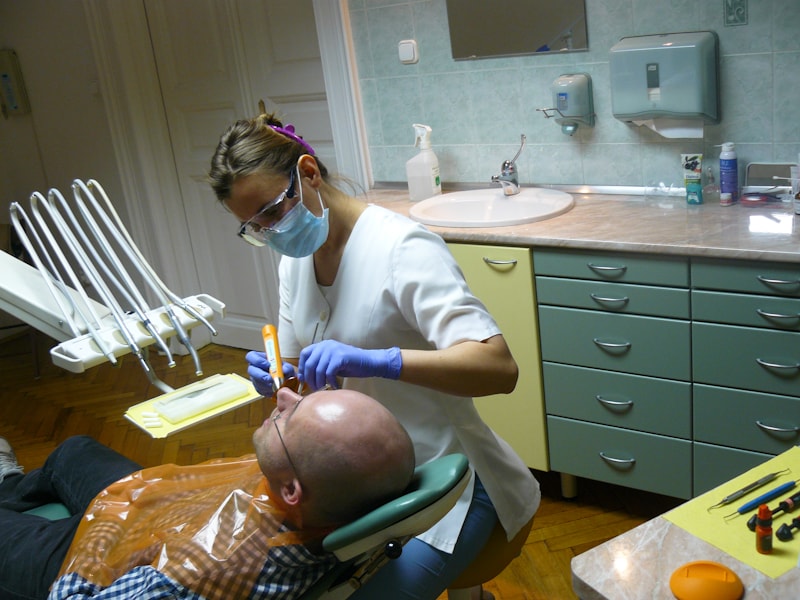Aesthetic fillings
Light-curing fillings
 The reconstruction of decayed or broken teeth depends on the size of their remaining part. If the remainder of the tooth is sufficiently big enough after the removal of the decayed tooth matter, the tooth can be rebuilt with light-curing filling material. The essence of this process is that the filling is put in the pre-prepared tooth cavity in a malleable form, and completely hardens when illuminated by a special lamp that operates partially in the UV range.
The reconstruction of decayed or broken teeth depends on the size of their remaining part. If the remainder of the tooth is sufficiently big enough after the removal of the decayed tooth matter, the tooth can be rebuilt with light-curing filling material. The essence of this process is that the filling is put in the pre-prepared tooth cavity in a malleable form, and completely hardens when illuminated by a special lamp that operates partially in the UV range.
Pinned abutments
 If the missing part of a tooth is significant, but can still be recouped with light-curing filling, a need for reinforcement in the form of pins might arise. Root canal filled teeth can be made more resilient against massive chewing forces by attaching a ceramic pin that is reinforced by gold or glass fibre to the root. Holes of appropriate length are drilled into the canal in which the pin will be anchored by a strong bonding agent. Then the tooth can be further built with the use of light-curing material. If the cleaned tooth is not root canalled, but the missing part of the tooth is significant, the titanium pin or pins will be placed directly into the tooth, not into the drill holes of the root. This can be followed by the further building of the tooth with light-curing material. A great advantage of light-curing dental fillings – whether they are reinforced with pins or not – is that they can be prepared in the clinic and exposed to pressure right away, without having to wait hours for its hardening.
If the missing part of a tooth is significant, but can still be recouped with light-curing filling, a need for reinforcement in the form of pins might arise. Root canal filled teeth can be made more resilient against massive chewing forces by attaching a ceramic pin that is reinforced by gold or glass fibre to the root. Holes of appropriate length are drilled into the canal in which the pin will be anchored by a strong bonding agent. Then the tooth can be further built with the use of light-curing material. If the cleaned tooth is not root canalled, but the missing part of the tooth is significant, the titanium pin or pins will be placed directly into the tooth, not into the drill holes of the root. This can be followed by the further building of the tooth with light-curing material. A great advantage of light-curing dental fillings – whether they are reinforced with pins or not – is that they can be prepared in the clinic and exposed to pressure right away, without having to wait hours for its hardening.
Dental inlays
If a significant part of the tooth is missing, it can be recreated by a special insert, called an inlay. After the preparation of the oral cavity, an impression is created of the tooth, based on which a dental technician prepares the abutment, which is then attached to the tooth with a strong bonding agent. Inlays can be made of gold or plastic that are reinforced by glass fibre and ceramic particles, or porcelain. The advantages of inlays are that they provide a higher degree of aesthetics, and bigger cavities can also be filled with them. Their drawback is that, since they are prepared by dental technicians, they cannot be completed in one session.




